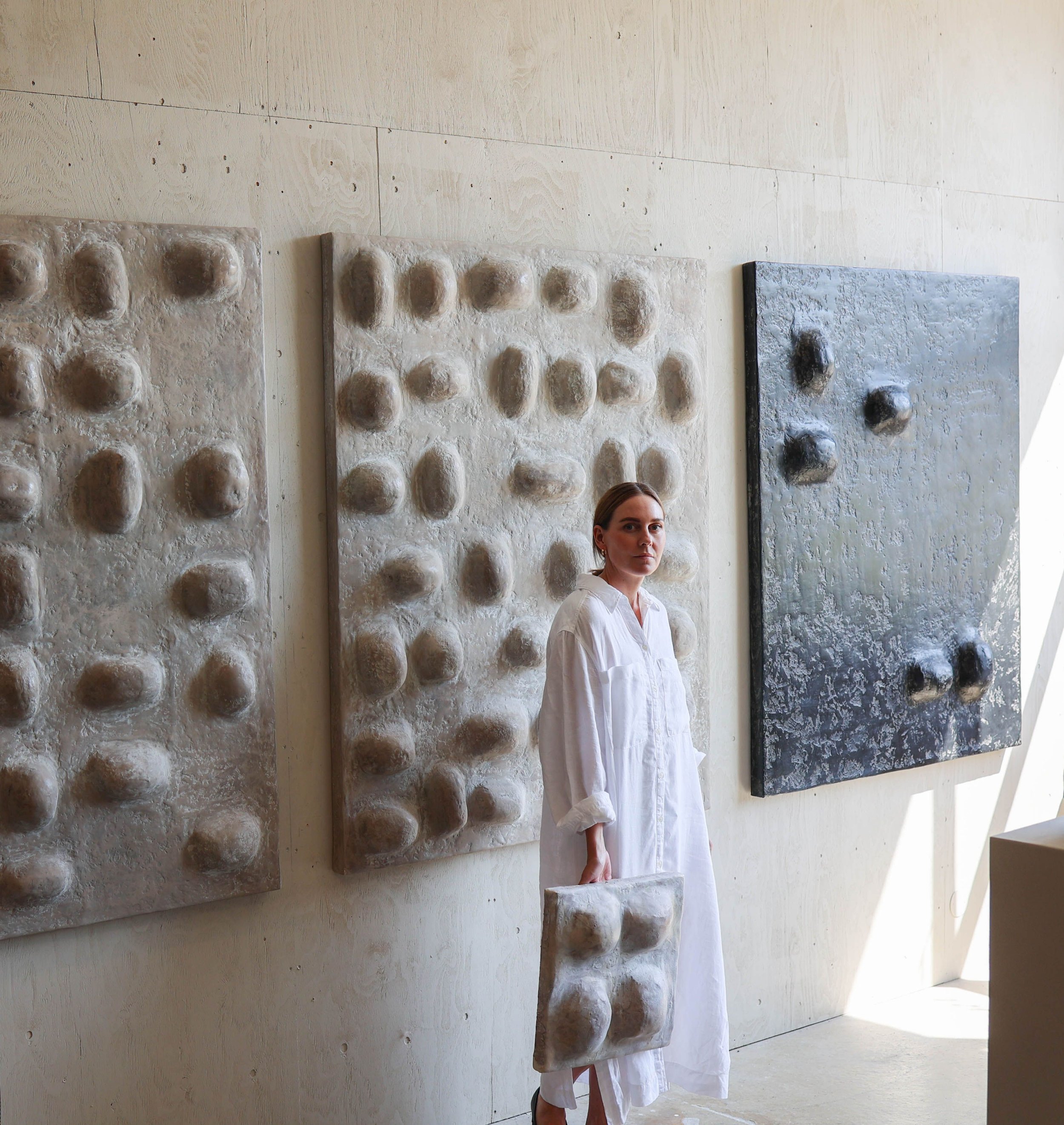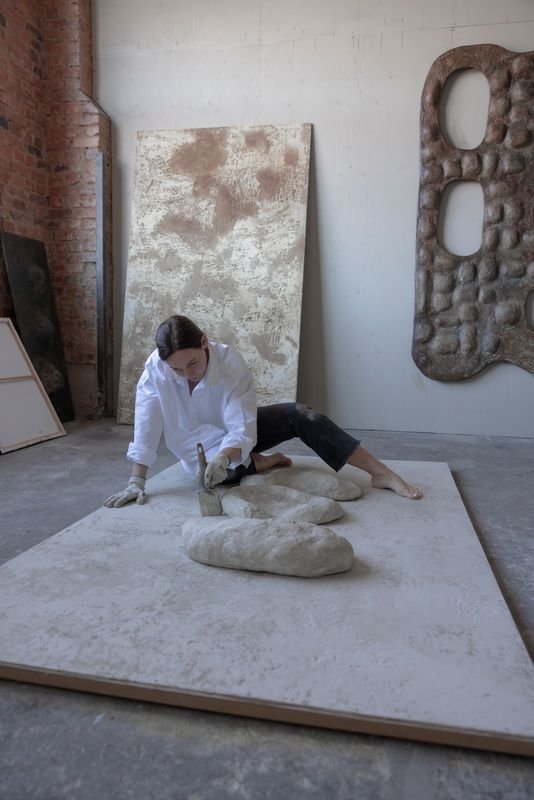Conversation with Rebecca Charlez: Unveiling the Essence of Sculptural Artistry
Rebecca Charlez’s artistic journey is a testament to the innate impulse to create. From childhood explorations with paper clay sculptures to the intricate carving of totem poles as a teenager, she has always been drawn to the tactile realm of sculpture. Reflecting on her journey, Rebecca shares, "Sculpture has always been a thing for me. I just didn’t know back then that it was an art expression; it was all so natural for me to just create."
Q: Your artistic journey has taken you through various mediums, including drawing, photography, writing, and music, before settling into sculptural art. Can you share with us what drew you to sculpture and how your earlier experiences influenced your current style?
A: "I think that sculpture has always been a thing for me, from making paper clay sculptures as a child to wood carving small totem poles as a young teenager. I just didn’t know back then that it was an art expression; it was all so natural for me to just create. On the other hand – music, drawing, and sculpture are all the same for me in a way. It’s just a variation of materials. It all originates from the same kind of urge for creating."
Q: Your sculptures are characterized by their monochrome expressions and textured layers, often allowing cracks and marks to emerge naturally throughout the process. What led you to develop this distinctive style, and what significance do these elements hold in your work?
A: "The natural cracks and imperfections in my work symbolize my collaboration with the unknown, what you can’t change in life, with acceptance. Always striving for perfection in every way of life isn't that a waste of time? As a perfectionist, I have to work on this. Making the natural marks that appear during my work process a part of the artwork is a way to work together with the universe and accept some things as they are. I think that is key for happiness in life. And imperfections are beautiful!"
Q: Many have described your work as having a Scandinavian design language, despite your roots in Sweden. How do you perceive this influence, and how does it manifest in your artistic expression?
A: "I wouldn’t describe my work as typically Scandinavian, but I bet there are Scandi influences that I’m not aware of. Swedish and Scandinavian design is characterized by simplicity, functionality, and minimalism. I think that my sculptural works may be too bold and dynamic for the general Scandinavian space. On the other hand, muted colors, natural elements, and a sense of tranquility feel very close to me, and that is typically Scandinavian as well."
Q: You mentioned being inspired by nature and the passage of time, particularly drawn to old, worn materials and the textures they possess. Can you elaborate on how these influences shape your creative process and the materials you choose to work with?
A: "Inspiration for me is finding things that make me feel grounded. And when I feel grounded, I create. Like old objects that have a story to tell. I think it’s fascinating to think about an old, worn-out door, for example, that has been used for generations. On the other hand, nature also inspires me, but it’s timeless."
Q: Your approach to art seems to emphasize intuition and flow, with an openness to surprise and spontaneity in the creative process. How do you maintain this sense of fluidity while also navigating the technical aspects of sculpting?
A: “Intuitivity is very important to me in my creative process and I often get surprised by the end result. That doesn’t mean that I like everything that comes out, but I am very curious to know what’s in there.”
Q. As you continue to evolve as an artist, what aspirations or goals do you have for your work in the future? Are there any particular themes or concepts you're eager to explore further?
A: “I have a lot things I want to try in the future. Like working with new materials and seeing how my style would develop with textile or metal for example. Or why not taking up wood carving again. Who knows, maybe the mini totem poles will be scaled up this time around?”
Q. Are there particular social issues that resonate with you, and how do you see the intersection between art and addressing these issues?
A: “I think that everything I create is a reflection of society and the time we are living in. I believe art serves as a powerful medium for addressing social issues because it has the ability to evoke emotions, spark dialogue, and inspire action. All my works have a personal story to tell and I hope that my creative expression can resonate with people.”
Q. Lastly, for aspiring artists or those interested in pursuing a creative path, what advice would you offer based on your own experiences and journey in the art world?
A: “My advice would be to trust your instinct. Instead of looking at what others do, go your own way. Find what you really love to do no matter what you think others like or not. Because that is what the world needs. You.”
In Rebecca's sculptural artistry, we witness not just the mastery of form and texture but also a profound dialogue with the fundamental elements of existence. Through her work, she invites us to embrace imperfection, find beauty in the passage of time, and discover solace in the rhythms of nature.

